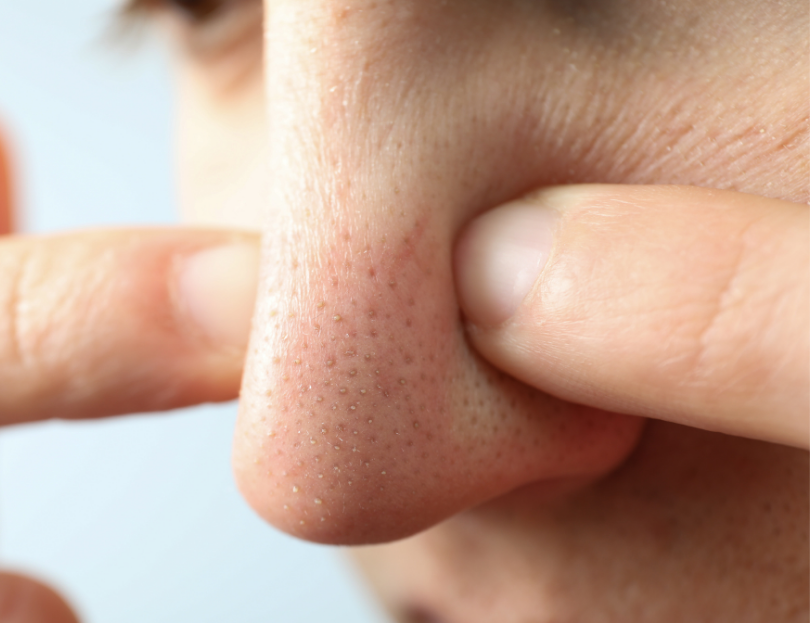What Are Blackheads and How Do They Form?
Blackheads are formed when the oil and dead skin cells that accumulate in the pores come into contact with air, causing them to oxidize and turn black.
Blackheads don’t necessarily indicate that the skin is dirty.
Blackheads are most commonly found on the nose because the oil glands in this area are larger and produce more sebum.
As long as sebum production continues, which serves as a barrier against bacteria and irritating environmental factors while providing moisture and being a crucial part of the skin’s mantle, blackheads will continue to form.
Completely blocking sebum production is not feasible; therefore, in cases of excessive production (during adolescence, hormonal factors, excessive sweating, inadequate cleansing, PCOS), the balance of production needs to be maintained to prevent an excessive formation of blackheads.
Recommendations:
- Cleanse your skin twice a day, and additionally after excessive sweating.
- Change your pillowcase weekly.
- Regularly sterilize your phone.
- Try not to touch your face.
- Use non-comedogenic moisturizers and sunscreen.
Topical Treatments:
- Salicylic acid: A fat-soluble BHA that dissolves oil and dead cells in the pores.
- Glycolic acid: An exfoliator that triggers surface skin peeling.
- Mandelic acid.
- Retinoids: Renews cell cycle, balances sebum production, and exfoliates the skin by removing dead cells.
- Benzoyl peroxide: Cleans dead skin cells and sebum.
- Azelaic acid: Reduces keratin production, thus decreasing the amount of dead skin cells.
- Clay masks: Help detoxify the skin and remove dirt and oil from the surface. This is especially useful for those with acne-prone or oily skin.
Not Recommended:
- Mechanical extraction (squeezing) can lead to inflammation and scarring.
- Pore strips are not effective.


